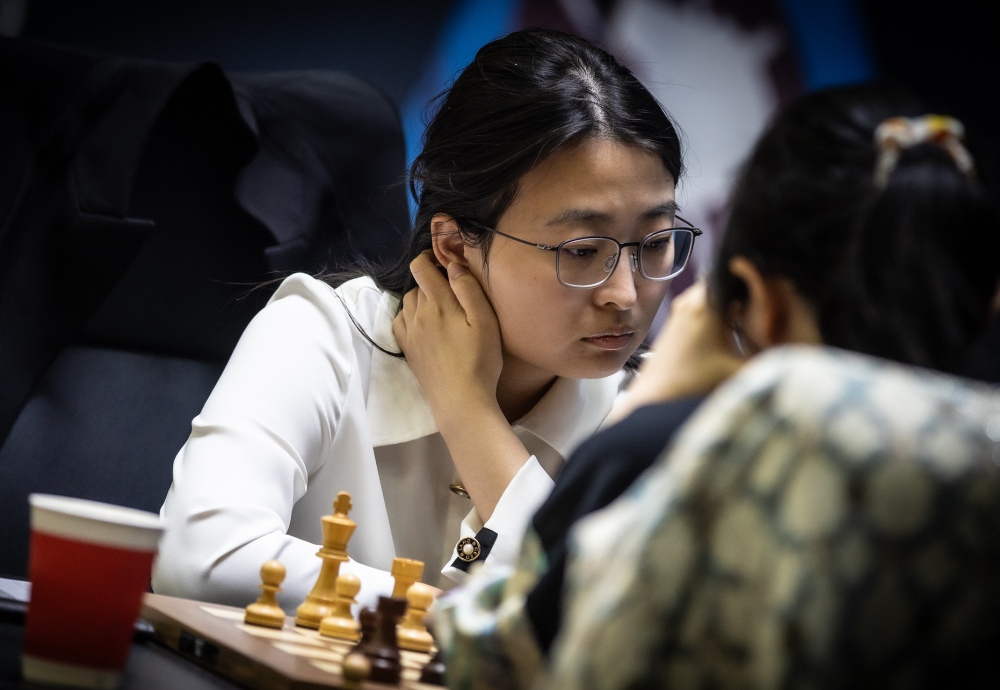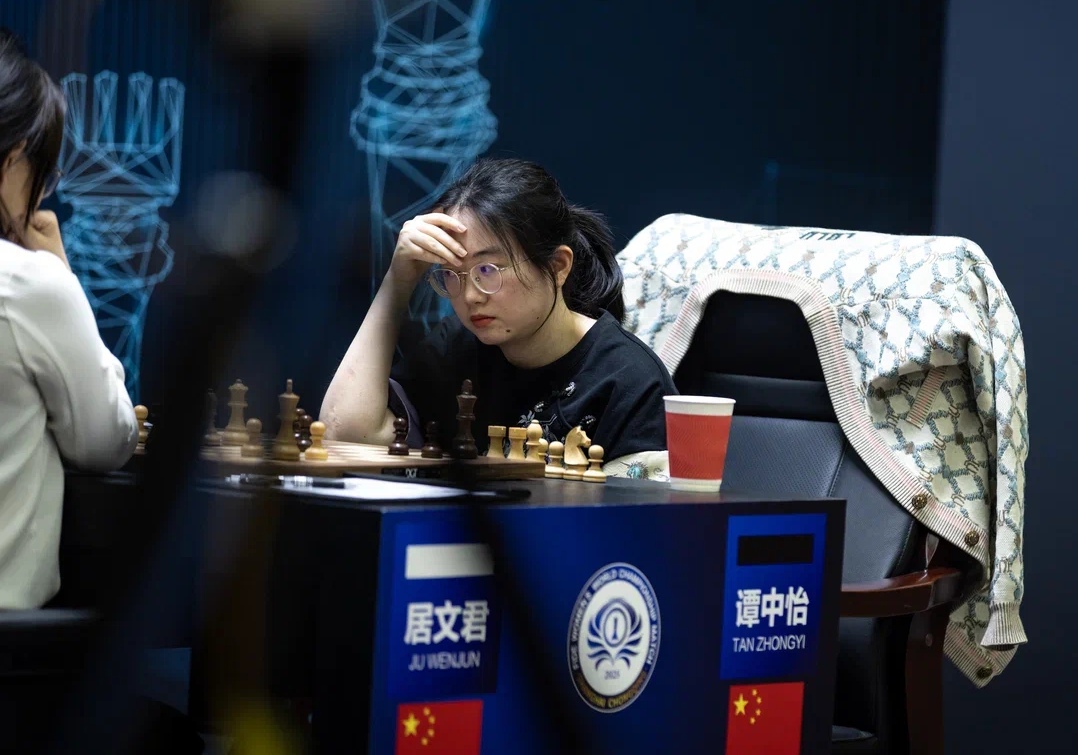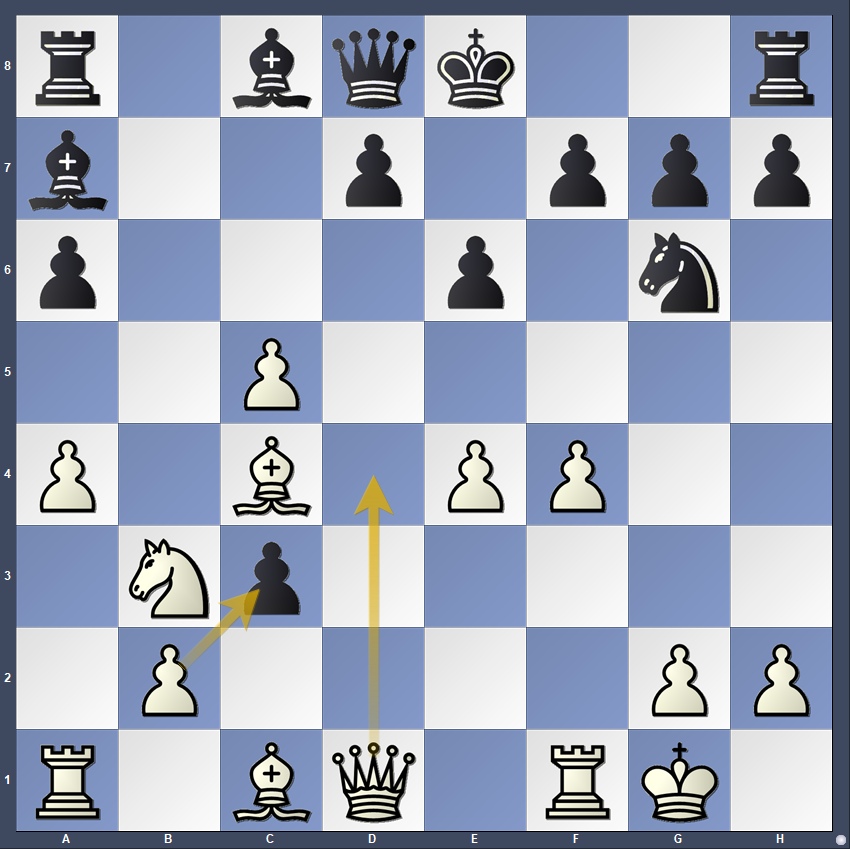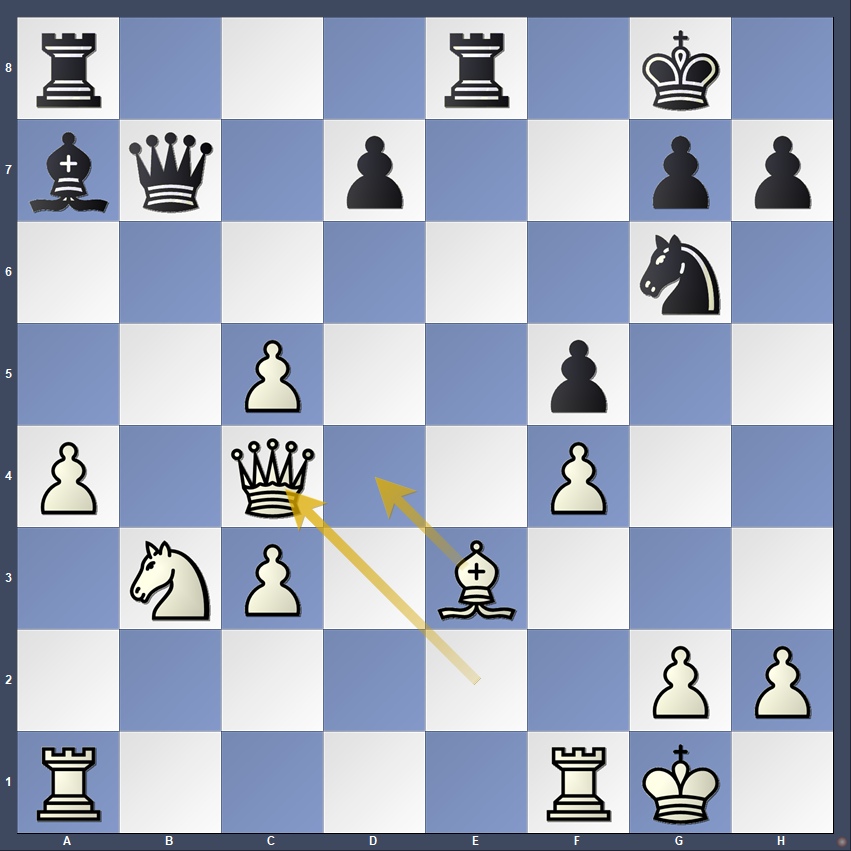
For the first time in the match, reigning World Champion Ju Wenjun has taken the lead, winning Game 5 in commanding fashion. After an opening that went awry for Tan Zhongyi, playing with the Black pieces, White quickly gained a significant advantage. Though the evaluation fluctuated, Ju remained in control, eventually picking up material for no compensation—leading to a completely dominant position and a well-deserved victory.
Today’s game was a sharp contrast to the marathon 81-move draw in Game 4. In that encounter, Tan obtained promising positions but failed to convert. This time, the roles were reversed, and Ju Wenjun made no such mistake. She kept a firm grip on the position, never allowing her opponent a chance to escape.

This sense of déjà vu has been a recurring theme throughout the match—even before it began. The same two players are once again battling for the world title, and this year, we’ve even seen repeated opening choices. In every game where Ju has had White, Tan has responded with the Sicilian. However, today, Tan opted for the Kan Variation, an intriguing decision that even drew a comment from Grandmaster Anish Giri on X (Twitter).
As usual, Tan blitzed out her opening moves, appearing confident in her preparation (or at least projecting that impression). Throughout the match, her Black games have featured similar pawn structures. However, Ju, who typically takes more time in the opening, surprised her opponent with the early advance 10.c5 (a new move in this position), steering the game out of Tan’s prepared lines.

For the first time in the match, Tan paused for 10 minutes on a single move. In the post-game press conference, Tan admitted that this move was not part of her preparation, so she had to find a way forward at the board. However, the plan she chose was not ideal. Her pieces became awkwardly placed, while Ju’s setup was smooth and harmonious. To make matters worse, Tan lagged in development, repeatedly moving the same minor pieces. A few moves later, White had taken the upper hand, but her advantage briefly slipped away:
Here, the intermezzo 15.Qd4 would invite 15…cxb2, after which 16.Bxb2 creates powerful pressure along the a1–h8 diagonal. The move also targets the weakened kingside, controls the e5-square, and if Black castles (15…0-0), then 16.f5! would be devastating.
In the game, Ju opted for 15.bxc3 – a solid choice that still retained an advantage. However, after 15…Bb7, the Qd4 idea became critical to implement. Instead, Ju played the more passive 16.Qe2, dropping a significant part of her advantage. Now, any kingside expansion with f5 could be met by the knight’s jumping to e5. Ju admitted in the post-game press conference that she did not spend much time on Qd4. Two moves later, it was actually Black who pushed 17…f5? (instead of the more reserved 17…Qc7), but it backfired, weakening her king’s position and leaving White with a commanding advantage.

It was not easy getting a confidence read on Tan – she would often play with her usual speed, and stroll around the tournament hall even though the position on the board told a different story. The optics of confidence have worked for her so far, but this time a comeback seemed unlikely as the game progressed.
Even though Ju did not convert her advantage with a surgical precision, she was always more comfortable, and the one in the driver’s seat. Eventually, she picked up another pawn and emerged two pawns up for which Black had no compensation.
With a material advantage, an outside passed pawn, and better-coordinated pieces, White’s win became straightforward. Ju had a wide range of playable options, while Black struggled to find any plan at all. Yet, as we’ve seen throughout the match, it’s never truly over until the final move. Tan tried to stir up counterplay, first by exchanging two minor pieces for a rook and a pawn, followed by infiltrating White’s vulnerable back rank with threats of mate. Ju had to navigate carefully, sidestepping potential pitfalls. But the World Champion demonstrated necessary accuracy when it mattered most. Eventually, with her ammunition run out, Tan Zhongyi had nothing left to fire and, after 59 moves, she resigned.
This marks the first time Ju Wenjun has taken the lead in the match – an important psychological boost, especially with the added confidence of playing on home soil. One final game remains in Shanghai before the match moves to Chongqing, and it is shaping up to be the most psychologically significant of the match so far.
FACT SHEET, Game 5, FIDE Women’s World Championship 2025:
White: Ju Wenjun
Black: Tan Zhongyi
Result: 1-0
Opening: Sicilian Defence, Kan Variation
Game length: 59 moves
Match score: 3-2 (in favour of Ju Wenjun)
Follow FIDE’s social media channels for updates, tune into YouTube for live commentary and coverage, and visit the official match website for more information.
Written by Charlize van Zyl
Photos: Anna Shtourman
Official website: womenworldchampionship2025.fide.com/

About the Match
The 2025 FIDE Women’s World Chess Championship match between Ju Wenjun and Tan Zhongyi follows a 12-game format. The first player to score 6.5 points will be declared the winner.
The time control for each game is 90 minutes for the first 40 moves, followed by 30 minutes for the rest of the game, with an increment of 30 seconds per move starting from move 1.
If the match is tied at 6-6 after all 12 games, a tiebreak will determine the champion. The tiebreak procedure involves a series of rapid and, if necessary, blitz games to ensure a decisive outcome.




